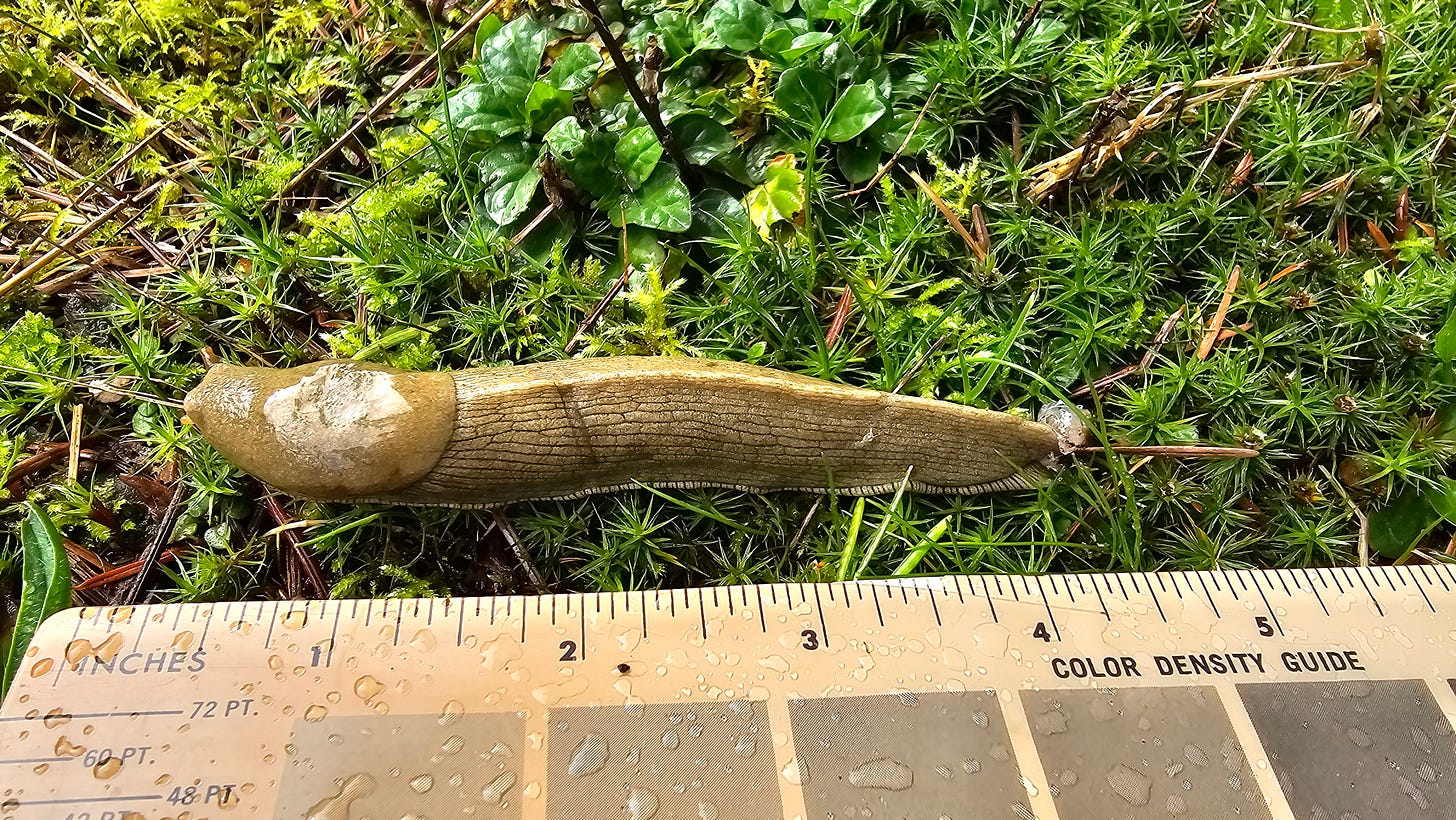Six Tips to Uninvite Slugs to Your Garden
Slugs and snails can devour gardens, but you can stop them, naturally.

We were away for a couple weeks on vacation, visiting our son in Omaha. When we returned, slugs had invaded our garden. They decimated one particular cabbage, in a pot in our greenhouse, and ignored much easier to reach cabbages planted outside in the ground.
I have to wonder what made them target that particular plant and bypass the others nearby, and yet I’m grateful they did. It means the remaining cabbage are more likely to succeed.
Slugs here in the Pacific Northwest are huge, measuring up to 30 centimeters (nearly 12 inches!) long. Most of the ones we see here in the garden are about half that size. In nature, they help with plant decomposition, munching through leaves, mushrooms, and other material with their 27,000 microscopic teeth, called radula.
The European slugs (Arion rufus) are the ones currently attacking our garden. They’re brown or black with ridged bodies. The native slugs – banana slugs (Ariolimax columbianus) – tend to be lighter in color, usually green or gray, and sometimes pearly white or bright yellow. They often have black or brown spots that remind me of Holstein dairy cattle – the classic white cows with large black spots. (Yes, Holstein come in red and white, too.) The banana slugs, to me, are kind of pretty.
I’d seen a few slugs in the garden before we left on vacation. I always plucked them off and tossed them far away. Snail slime doesn’t bother me much. When Randy, my husband, went into the greenhouse one night, however, they were everywhere!
After a bit of research, I learned why: Slugs like to live underground. In fact, Oregon State University notes that only about 5% of slugs are above ground at any given time. That’s why I can rarely catch them in the act! I can see their silvery mucus trail, though.
They also love, love, love to eat particular plants. Their favorites, according to OSU, are “Basil, the entire Broccoli family, Lettuce, Strawberries, Campanula, Daffodils, Gentian, Hosta, Impatiens, Japanese Painted Fern, Leopard’s bane, Lilies, Lobelia (perennial), Marigold, Narcissus, Primrose, Star of Bethlehem, Trillium, Tuberose Begonia, Viola, and Wild Ginger.” They also have a fondness for my own pepper plants.
A late night foray found this slug, munching on green peppers. Photo: Gail Dutotn
If they have favorites, they also have plants they really dislike. Once again, OSU says those are: “Agapanthus, Anemone, Astilbe, Bamboo, Bleeding Hearts, Candytuft, Coral Bells, Ferns, Foxglove, Hens and chicks, Impatiens, Ivy, Juniper, Nandina, Sedum, Solomon’s Seal, Sweet Woodruff, Wintergreen, and Yew.”
That doesn’t help my vegetable garden, but now I know what to plant in my shady flower garden!
Proven Slug Abatement Tips
So, what can we – because you may have this problem, too – do to keep most of the slugs out of our gardens?
1. Irrigate in the morning, so water can evaporate before slugs emerge for the evening.
2. Place wide copper strips around plants. The copper must be wide enough that slugs can’t raise their bodies over it. The copper shocks them.
3. Encourage predators. Toads, snakes, beetles, marsh flies, birds, frogs, salamanders, newts, ducks, millipedes, porcupines, and raccoons all eat slugs. Be careful, though, that the solution isn’t worse than the problem. I really don’t want to attract racoons!
4. Hand pick the slugs and remove them. Evening is best.
5. Set slug traps. OSU has some recommendations.
6. Put out slug bait. You can make your own with water, sugar, and yeast – slugs like beer, too – or buy commercial slug bait.
Commercial baits are either iron phosphate, which disrupts slugs’ ability to metabolize calcium and kills them in three to six days, or metaldehyde, which dehydrates them if they eat it…unless the slug finds a water source fast. Warning: Metaldehyde is not safe to use around edible plants and can harm dogs, cats and fish.
None of these solutions will completely solve the slug problem alone. Instead, Master Gardeners recommends using an integrated pest management approach that incorporates several of these options. And, be sure to remove slug habitat near your garden. They take shelter beneath weeds, debris, rocks, and anything else that provides shade.
Typically, I’ve resorted to simply picking off the slugs. Tonight, I think I’ll try a trap and bait made from water, sugar, and yeast. Wish me luck!
Do you have a slug or snail problem? How have you dealt with it?
Thanks for reading Where the Asphalt Ends! It’s delivered, free, to your inbox each week.




